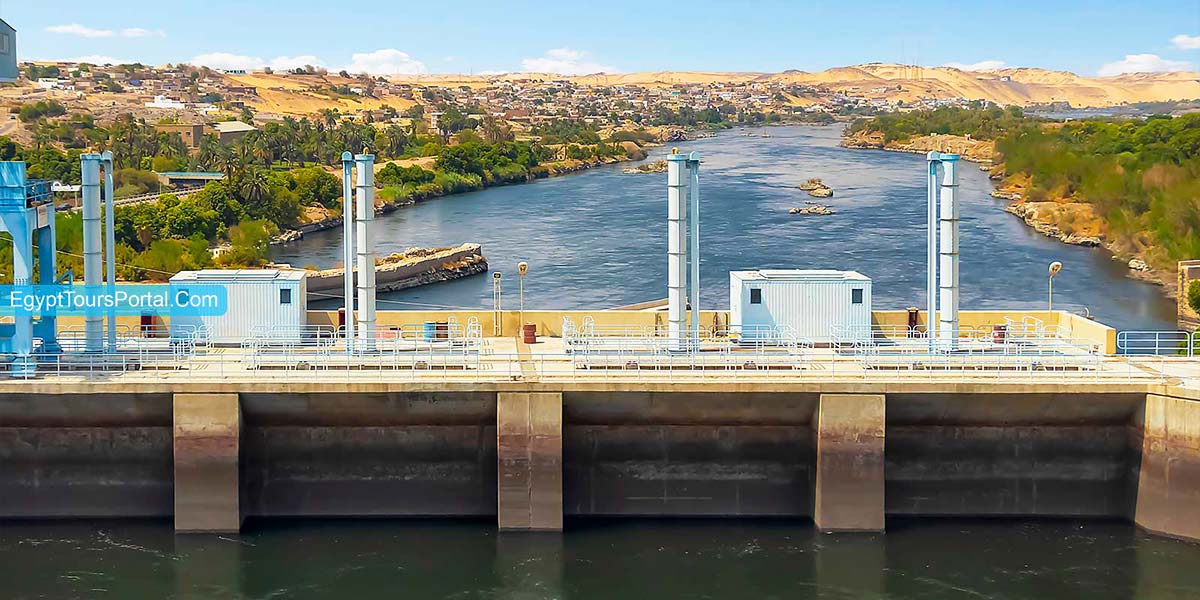
Throughout the history of Egypt, there have been many attempts to construct a dam in Aswan as in the 9th century during the reign of the Fatimid Caliph Al-Hakim Bi-Amr Allah a polymath and engineer by the name of Ibn al-Haytham attempted to regulate the flooding of the Nile by building a dam but was not successful. In 1912 AD, King Farouk ordered a Greek-Egyptian engineer called Adrian Daninos to build the high dam but was not complete. The Great President Gamal Abd El-Nasser ordered to build the High Dam after the revolution in 1952 but he was met with the western refusals from the UK and the US to co-operate and that’s why he turned to the Soviet Union for their technological and financial support.
The work started on January 9th, 1960, and was completed in 1971 in the spring. Lake Nasser was the result of the High Dam construction, which is an outstanding lake between Egypt and Sudan. It is one of the largest man-made lakes in the world, build to store water. It sits on an area of 5,250 sq km (2,030 sq mi) and is capable of holding up to 132 cubic km (1.73×1011 cu yd) of water. The Egyptian Government made a great effort to save the Nubian monuments from the damage caused by the rising level of water.
Aswan High Dam is 111 m high, with a length of 3,830 m (12,570 ft), and a Width of 980 m (3,220 ft). It can hold up to 43,000,000 cubic meters (56,000,000 cu yd) of material and has a hydroelectric plant, with six turbines, capable of producing 2.1 million kilowatts and this is the reason why it is considered one of the most important Egyptian sources for electricity and water. The total investment in order to construct such a huge project cost $1.12bn paid by the Soviet Union as a form of investment with a 2% interest. It provides water for around 33,600km of irrigation land stored at Lake Nasser. It required some 44 million cubic meters of building materials and a workforce of about 34,000 people to be built in full 10 years. The High dam also has 12 Francis turbines, with a capacity of 2,100 MW to supply electricity for industrial and household use.

The High Dam was mainly constructed to regulate the flow of the River that resulting in supplying irrigation water for all parts of Egypt for the whole year. It also contributed to increasing tourism by having the chance to navigate across the Nile River during Nile cruise packages. Its water is used to feed 12 power turbines. Let’s divide the impacts of the High Dam into categories:
The great High Dam has provided the ability for Egyptians to control the annual Nile flood. It uses now floodwater to irrigate thousands of acres, to improve navigation around Aswan, and supply the country with a huge amount of electricity up to 50% of the entire electricity production. It helped in the generation of hydropower and it caused an increase in industrial activities and diversities because of the availability of electricity. The dam protected Egypt from droughts and provided irrigation waters to 2 million Feddan (840,000 hectares) that became available for farming for various crops like rice, wheat, cotton, sugar cane, and acted as the new homes for 500,000 families.
The High Dam gave the country peace and stability because of the economic activities and the higher standard of living. It has also benefited in the settlement issues. It provided huge opportunities for youth to raise their social standard up while finding new job offers.
The High Dam led to the spread of a dangerous virus called schistosomiasis (bilharzia) and it’s one of the negative impacts. It helped in the implications of fish production and has changed the flora fauna.
The great High Dam helped in the reclamation of the desert that helped a lot in the development of the agricultural process. It changed the soil salinity and waterlogging. It changed the flow in the Nile both upstream and downstream of the dam. It caused sedimentation in the River Nile and Lake Nasser.
The reservoir lake Nasser was the reason behind the relocation of 50,000 Nubians to a new location called New Nubia about 45 KM away from Aswan. The biggest downside of the dam and the artificial lake is the relocation of 22 monuments including the great Abu Simbel and Philae Temple with the help of UNESCO in the 60s in the most difficult and expensive archeological rescue mission in history.
In the end, hope you enjoyed all information through this article, and if you have an exciting sense of adventure and decide to explore Egypt, then you can check our Egypt private tours which provide various Egypt vacations to all the best destinations in the land of Pharaohs.
Private 4 Days Cairo Tour Packages for UAE Travelers 4 days Cairo Egypt Tour package...
Tour Location: Cairo – Giza...
5 Days Cairo and Alexandria Tour Package For UAE Travelers 5 days Cairo and Alexandr...
Tour Location: Cairo/Giza/Alexandria...
6 Days Cairo, Luxor & Aswan Tour Package For UAE Travelers 6 days Cairo, Luxor &...
Tour Location: Cairo/Giza/Aswan/Luxor...
Amazing 7 Days Cairo and Hurghada Holiday for UAE Travelers 7 Days Cairo & Hurgh...
Tour Location: Cairo – Giza – Hurgh...









